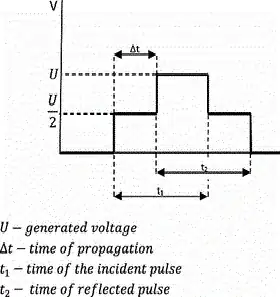Lets say I have a 1km long transmission line with a characteristic impedance of 50ohm. With a pulse generator I inject a really long pulse (30µs) the pulse generators termination is also 50 ohm. The response will look like the image below
So the amplitude U/2 of the reflections is because of the voltage divider formed by the two 50 ohm impedances. When using a signal generator with a known resistance (impedance) we should be able to calculate the impedance of any cable by the amplitudes of the reflections. Is my assumption correct?
